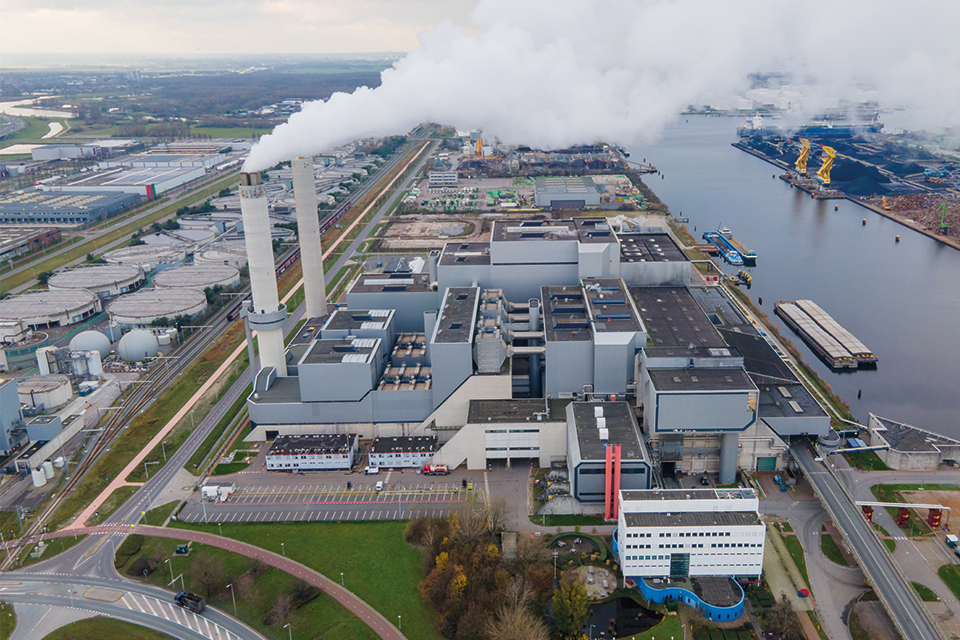2022-03-23
New European BAT Conclusions for Waste Incineration – it’s Time to Monitor Total Mercury

If you are in the waste incineration business, you might have heard that there are new and stricter emission regulations in the pipe within the European Union. Those regulations were made official just recently. But how does it all tie together? Let’s dig a bit deeper and connect the dots from “IED” to “THg”!
IED and BREF
The environmental impact of industrial activities within the European Union is nowadays controlled by the Industrial Emissions Directive 2010/75/EU, or shorter, the IED. It applies to all industrial activities within the EU. It became effective in 2013 when it replaced a number of general as well as application-specific directives and other regulations.
The IED as such is a generic directive but refers to reference documents giving detailed descriptions of methods to limit specific industries’ environmental impact. These documents are called BREFs (BAT reference documents, more about BAT below). At present, there are some 30 different BREFs applicable to different industry types and different industrial processes.
BAT and BAT-AELs
The answers to what can be done to limit the environmental impact of an industry, at least as of the time of publication of the BREF and within reasonable and practical limits, are found in a chapter of the BREF called “BAT conclusions”, or BATC. Here, BAT stands for Best Available Techniques.
The conclusions can be expressed both with and without “associated environmental performance levels”, or AEPLs. Performance levels are more or less easy to measure and can for instance be about consumption of energy or emissions of pollutants. The latter are called BAT-AELs, “associated emission levels”.
There are BAT-AELs both for emissions to air and to water, and noise levels can also be given limits. The BAT-AELs are specific for each BREF, and also within a BREF there can be multiple variants applicable to different types of plants within the industry segment. It is not unusual to also find exemptions from the limits for very specific cases of certain plants.
The BAT-AELs are often expressed as intervals. The lower limit is an indication of what the best facility of the applicable industry could achieve when the BAT conclusions were published. The upper limit states what is permissible according to the IED.
A Moving Target
The BREFs and thereby the BATCs are intended to be live documents. The EU has expressed the ambition to revise and improve each BREF with respect to new methods and technologies at least every eighth year. As a result, the BAT conclusions and in particular the BAT-AELs can be tightened without having to revise the IED or the national laws and regulations reflecting the IED.
It can also be noted that the BAT conclusions are minimum requirements within the EU. Individual member states can choose to apply stricter regulations, or implement updated conclusions quicker than the IED requires.
Right… But What About THg?
An example of the processes leading to updates of BREFs and BAT-AELs is the BREF for waste incineration (WI) facilities. The first WI-BREF was published in 2006, actually formed already under an elder EU directive preceding the IED. However, a new WI-BREF was established by the European Commission in November 2019, and the decision was formalized in the Official Journal of the European Union dated December 3, 2019 (L312). A four year time window then opened, during which the waste incineration plants covered by the WI-BREF have to adopt to its new requirements. Accordingly, the deadline for adopting is by December 2, 2023.
One of the changes compared to the old WI-BREF is a new requirement to continuously monitor the total mercury (THg) content in the emissions, at least unless the plant incinerates waste with “a proven low and stable mercury content”. In relation to this, there is now also a daily-average BAT AEL of “< 5-20 µg/Nm3” of THg in the “non-proven” scenario. Refer to “BAT 31” in the WI-BATC document. Accordingly, the clock is now ticking for the owners of the affected waste incineration plants to acquire THg monitoring equipment, if they do not already have such equipment meeting the needed performance requirements.
You can read more about the origin of mercury emissions, its health effects, and the difference between atomic and total mercury in a preceding blog article (click here).
How to Monitor THg Concentrations
OPSIS has developed a method for fast and precise measurements of concentrations of THg for continuous emissions monitoring purposes. The flue gas from the combustion process is extracted and sent to a converter where any compound-bound mercury is released to form atomic mercury, Hg0. The concentration of Hg0, and thereby effectively the concentration of THg in the flue gas, can then easily be determined using the proven OPSIS DOAS gas analysers. The same monitoring system can also be configured to measure concentrations of a number of other gases, such as NO, NO2, SO2, CO, CO2, NH3, H2O, HF, and HCl, thereby constituting a very cost-effective monitoring solution operating with a minimum of maintenance.
Please contact us if you wish to know more about the OPSIS monitoring solutions.

Main components of the OPSIS continuous emissions monitoring system for THg.
